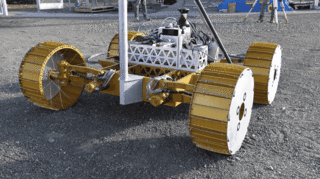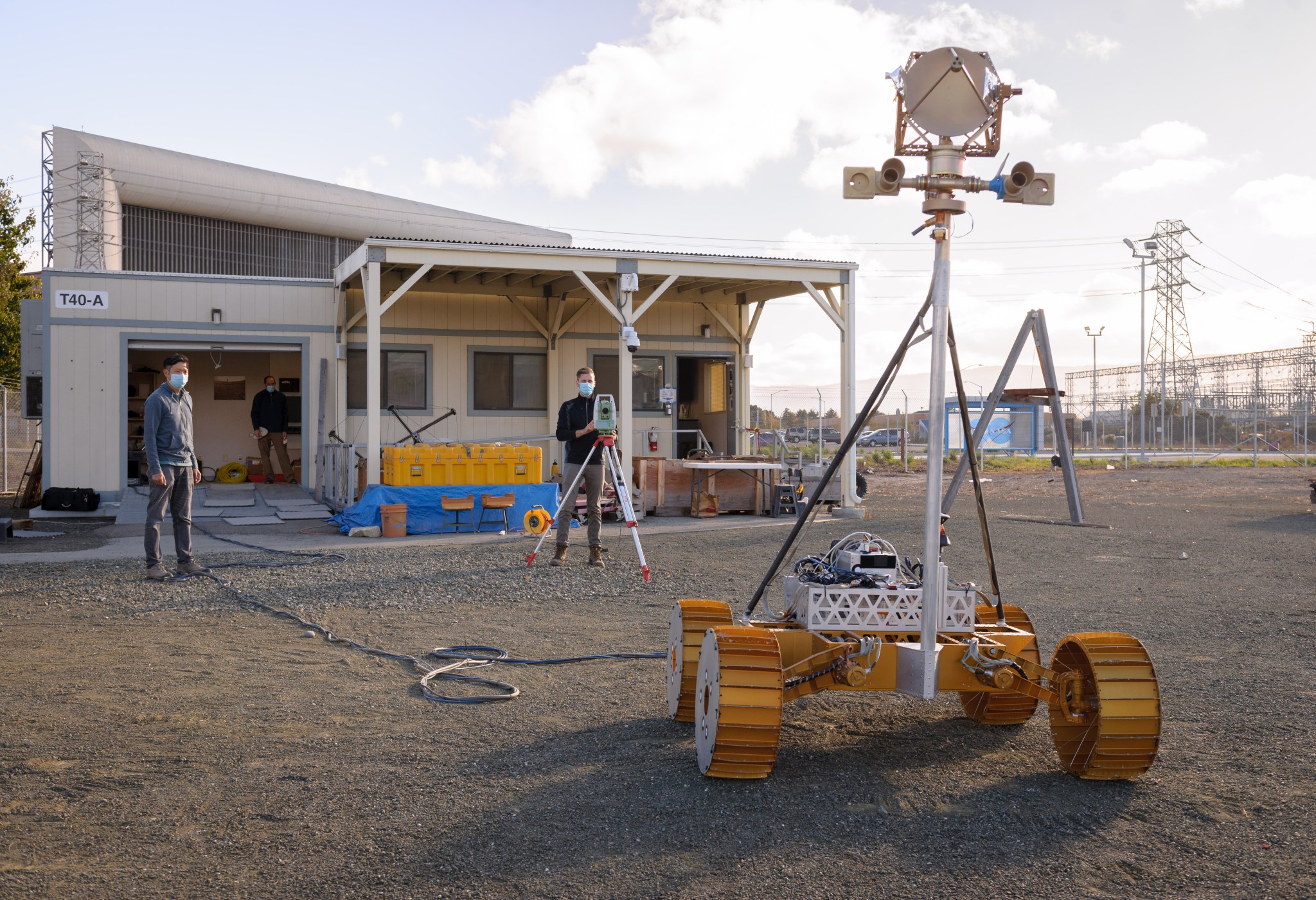If you opened up a robot vacuum, a self-driving car, or even one of NASA’s Mars rovers (which we’re definitely not recommending you do!) you’d find a bunch of processors programmed with software that serve as the robot’s “brains.” All robots have these computerized brains directing their movement and activity, but NASA’s Volatiles Investigating Polar Exploration Rover, or VIPER, will be the first off-world rover to have its brains split in two as it explores the Moon’s surface in search of water ice.

As it drives across the Moon, VIPER will effectively do its thinking from both its on-board flight software as well as from ground software running from mission control on Earth. Using an engineering prototype of the rover, the VIPER team recently began putting the software through its paces on a simulated lunar terrain at NASA’s Ames Research Center in California’s Silicon Valley.
“We use distributed computing all the time when we use our smart phones to run mapping apps that connect to faraway servers and data centers to run the calculations,” said Terry Fong, chief roboticist and VIPER rover deputy at Ames. “Similarly, VIPER will perform much of its data crunching on faster computers on Earth, since we have a relatively fast connection to mission control during all rover operations.”
In November, the team began testing the software’s ability to successfully execute commands with the prototype rover. Using an outdoor robotics research and development facility featuring slopes, boulders, and craters, called the Roverscape, the team had the software take the rover for a test drive. The rover performed a variety of activities, like turning in place, driving in a straight line, recording its position, adjusting the suspension, and keeping its antenna stable while moving to ensure the rover can stay in touch with Earth.
The Moon-Gravity Representative Unit prototype is a stripped-down, engineering test unit that focuses on VIPER’s mechanical system, which is specially designed to allow engineers to test how the rover will drive in lunar gravity, which is one-sixth that of Earth’s.
Because of the Moon’s proximity to Earth, communications delays are only a matter of seconds. VIPER’s engineers are taking advantage of this to download images and other data from the rover for fast processing, rather than having to rely only on the rover’s slower on-board computing, which also reduces the cost to develop the rover.
Faster data processing means the mission operations and science teams can make quick-thinking decisions about the rover’s path and science activities. This will speed up operations, expedite science findings and maximize what they can accomplish during VIPER’s 100-day mission on the Moon’s South Pole.
“In addition to the science and operations benefits, keeping a portion of VIPER’s software running on Earth means engineers can take advantage of the latest and greatest in computer processing, data storage, and networking,” said Hans Utz, VIPER rover software lead engineer with KBR at Ames.
Besides the use of distributed computing, VIPER also will break ground by being NASA’s first planetary rover mission to make extensive use of open-source software, including key components adapted from the Robot Operating System 2, or ROS 2, considered the industry-standard in robotics development. Once the mission is over, the VIPER team intends to release the rover’s software for general use. This approach allows for a rapid, agile, and cost-effective way of developing the rover’s software systems that can also benefit future rovers on the Moon and beyond.
VIPER is a collaboration within and beyond the agency. VIPER is part of the Lunar Discovery and Exploration Program and is managed by the Planetary Science Division of NASA’s Science Mission Directorate at NASA Headquarters in Washington. NASA’s Ames Research Center in California’s Silicon Valley is managing the project, leading the mission’s science, systems engineering, real-time rover surface operations and flight software. The hardware for the rover is being designed and built by NASA’s Johnson Space Center in Houston, while the instruments are provided by Ames, NASA’s Kennedy Space Center in Florida, and commercial partner Honeybee Robotics in Altadena, California. The spacecraft, lander and launch vehicle that will deliver VIPER to the surface of the Moon will be provided by Astrobotic in Pittsburgh, Pennsylvania, who was selected through NASA’s Commercial Lunar Payload Services, or CLPS initiative, delivering science and technology payloads to and near the Moon.
For news media:
Members of the news media interested in covering this topic should reach out to the NASA Ames newsroom.


























